Climb Mount Kilimanjaro Tanzania
Conquering the Roof of Africa: A Comprehensive Guide to Climbing Mount Kilimanjaro
Adventurers and trekkers from around the globe dream of conquering Mount Kilimanjaro, the highest peak in Africa, which soars majestically above the Tanzanian plains. Standing at 5,895 meters (19,341 feet), Kilimanjaro is not only Africa’s tallest mountain but also the world’s tallest free-standing mountain, making it one of the most alluring destinations for climbers and nature enthusiasts.
Climbing Mount Kilimanjaro is a life-changing adventure that challenges the body and spirit. With the right preparation, guidance, and determination, reaching the summit of this iconic peak is an achievable dream for many. Whether you’re a seasoned hiker or a novice looking to push your limits, Kilimanjaro offers a profound experience that will leave you with lasting memories and a sense of accomplishment that few other destinations can match. As you stand on the roof of Africa, watching the sunrise over the vast continent, you’ll know that every step was worth it.
Where is Mount Kilimanjaro?
Mount Kilimanjaro is located in Tanzania near the border with Kenya about 330 km south of the Equator. It is the highest peak in Africa and the world tallest free standing Mountain with three peaks shira, Mawenzi and Kibo. The highest point of Mount Kilimanjaro is Kibo peak which stands at 5,895 meters (19,340 feet) above sea level.
Which is the best route up the mountain?
Till now there are six trail established leading to the summit of Mount Kilimanjaro. The best route will depend on the climber’s preferences and time. For example if you have few days and prefer to sleep in huts instead of tents then Marangu is the best option for you. If you have more days and prefer best scenery, popular route with high success rate then Lemosho and Machame can be the best option for you.
Climb Kilimanjaro Tours
Climbing Kilimanjaro is no small feat, and it requires careful planning and assistance. We at Wilds of Africa Tours we offer guided climbs that include porters, guides, and chefs to ensure climbers have the best chance of reaching the summit. These tours vary in length, cost, and difficulty, but they all provide an unforgettable experience as you trek through diverse ecosystems, from rainforest to alpine desert.
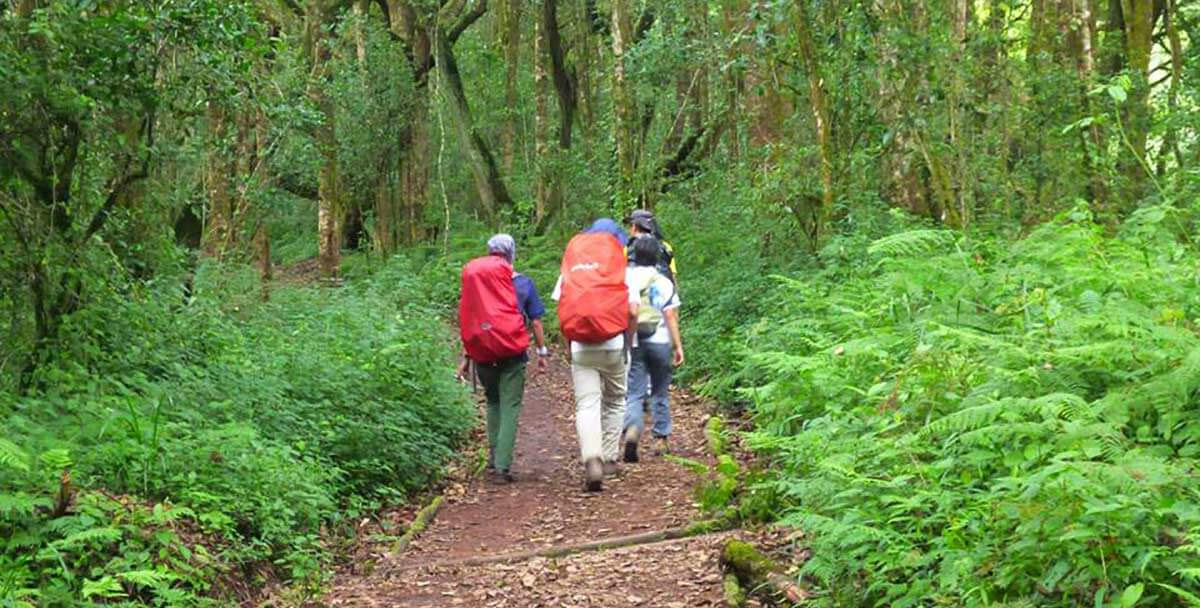
6 Days Kilimanjaro Climb Marangu Route
Climb Kilimanjaro through the most popular and oldest route”Marangu”
From US $ 1750 per person sharing
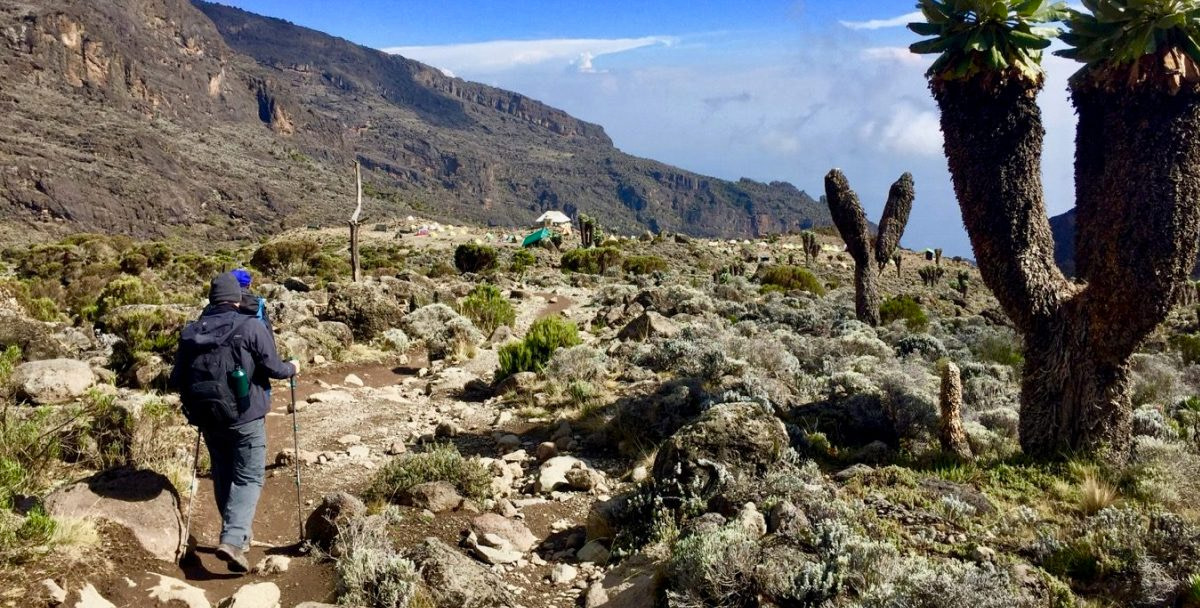
7 Days Kilimanjaro Climb Machame Route
Trek Kilimanjaro through the most scenic route with the good succes rate .
From US $ 2250 per person sharing
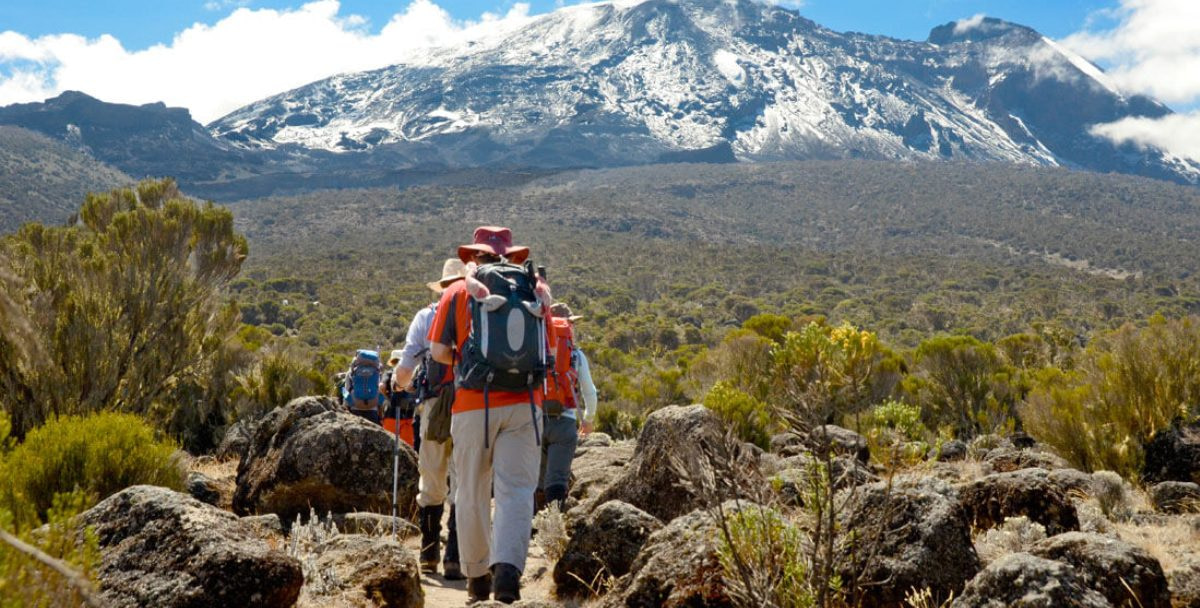
Kilimanjaro Climb - Lemosho Route
Climb Kilimanjaro along Lemosho route which has the highest success rate
From US $ 2250 per person sharing
6 Days Climb KILIMANJARO RONGAI Route
Climb Kilimanjaro through the most popular and oldest route”Marangu”
From US $ 1750 per person sharing
7 Days CLIMB Kilimanjaro UMBWE Route
Trek Kilimanjaro through the most scenic route with the good succes rate .
From US $ 2250 per person sharing
CLIMB Kilimanjaro - SHIRA ROUTE
Climb Kilimanjaro along Lemosho route which has the highest success rate
From US $ 2250 per person sharing
Routes to Climb Kilimanjaro
There are several established routes to reach the summit of Kilimanjaro, each with its characteristics, advantages, and challenges:
- Marangu Route: Often called the “Coca-Cola” route, it is the oldest and most established. It offers hut accommodations, making it the only route with such facilities.
- Machame Route: The “Whiskey” route is more challenging than Marangu. It is known for its scenic beauty, but it requires camping.
- Lemosho Route: This route is longer and starts on the western side of the mountain. It offers a more gradual ascent and better acclimatization, increasing the success rate.
- Rongai Route: Approaching from the north, this route is less crowded and offers a more remote experience.
- Umbwe Route: The steepest and most direct approach, it is recommended for experienced climbers.
- Shira Route: Similar to the Lemosho route but starting at a higher altitude, this route requires climbers to be well-acclimatized.
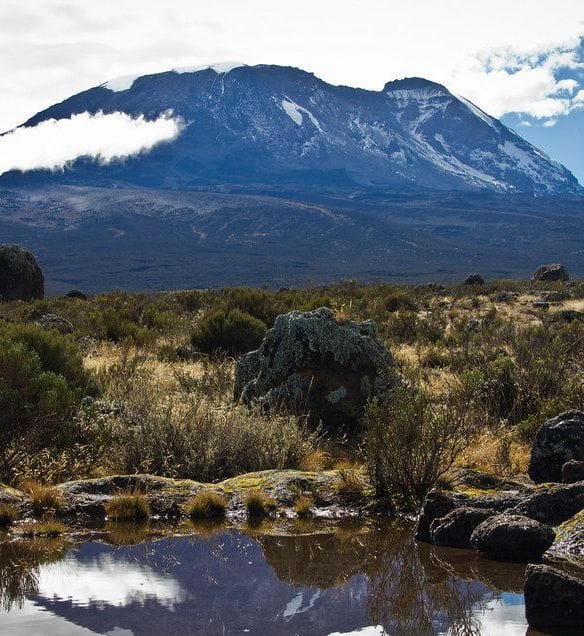
The First Person to Climb Kilimanjaro
The first recorded successful summit of Kilimanjaro was achieved by Hans Meyer, a German geographer, and Ludwig Purtscheller, an Austrian mountaineer, in 1889. Their expedition laid the foundation for those that followed, turning Kilimanjaro into the treasured destination it is today.
How Difficult is it to Climb Kilimanjaro?
Climbing Kilimanjaro is often considered a “non-technical” climb, meaning it requires no special mountaineering gear or advanced climbing techniques. However, it is by no means easy. The main challenge climbers face is altitude sickness, which can affect anyone regardless of fitness level. The trek involves long walking hours, and the summit day, in particular, is extremely demanding, with climbers often starting their ascent to the peak in the dead of night to reach the summit by sunrise.
The Success Rate of Climbing Kilimanjaro
The success rate on Mount Kilimanjaro is mainly depends on the route used to climb and the number of days spent to climb. For that case route with many days have higher success rate than those with few days. However the average success rate across all routes is 65%.
Among the factors which contribute to the low success rate on climbing Kilimanjaro are:
Altitude Sickness
Altitude sickness is the main cause for the trekkers not to reach to the summit. About 90% of all failures are due to the mountain sickness. The best way to avoid it is to choose the long route with many days as that will give sufficient time for the body to acclimatize. If your budget is low enough for few days then you can go for it but you should not ignore the extra day for acclimatization since it help your body to adhere with the mountain weather and make your Kilimanjaro Climb to the summit possible.
Medical / Healthy Condition
Some healthy and medical conditions are not favorable for climbing Kilimanjaro. Such conditions includes, high or low blood pressure, respiratory issues eg asthma, heart conditions, spine problems, circulation problems, diabetic problem, intestinal and kidney problems, hypoglycemia head trauma or injury. People with these medical conditions once attempt to climb Kilimanjaro their chance of reach the summit is very low.
Insufficient preparation
Many climbers underestimate Mount Kilimanjaro because is a walk able mountain by not doing sufficient fitness exercise for Climbing Kilimanjaro. As result this lead them to a failure to reach the summit
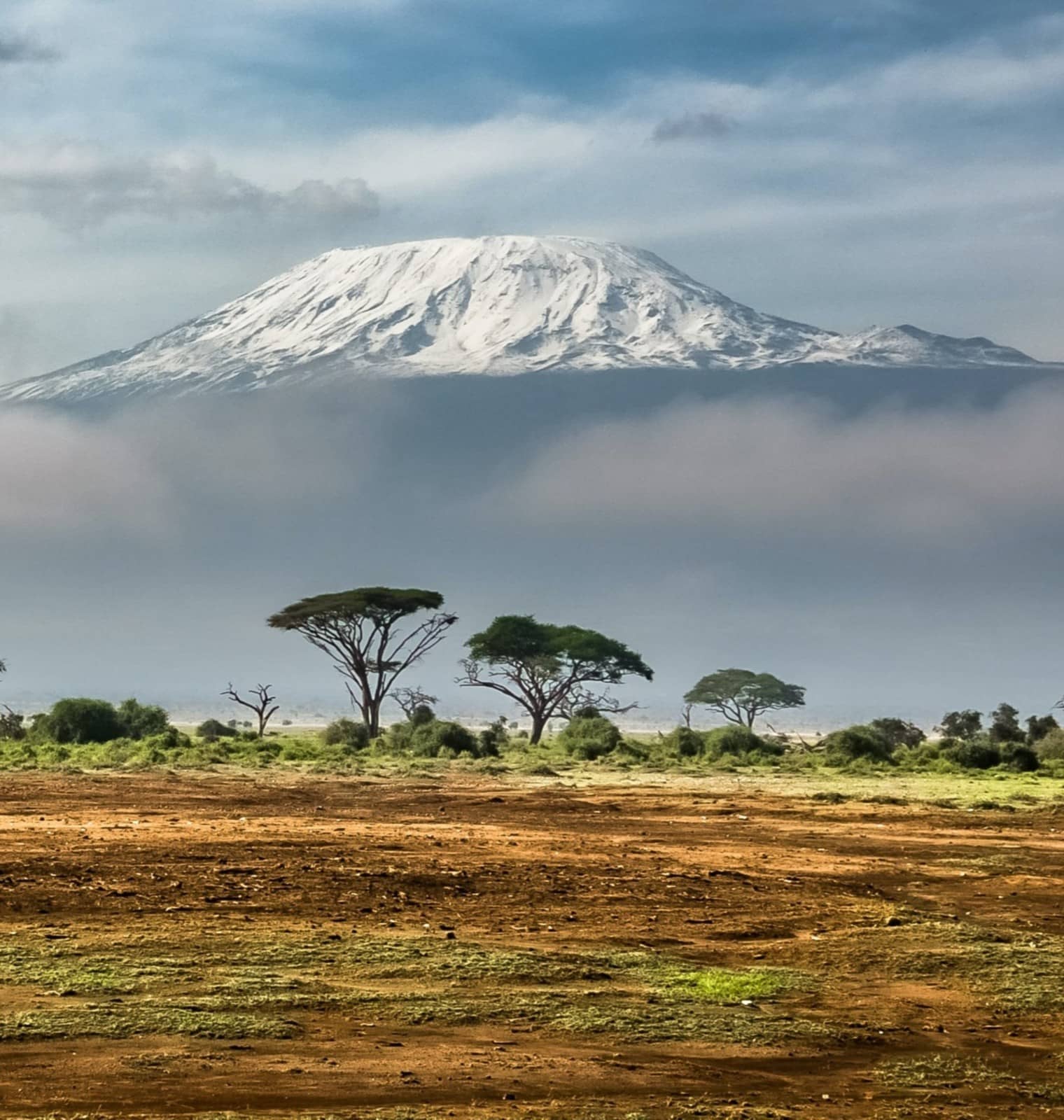
How Long It Takes to Climb Mount Kilimanjaro
The duration of a Kilimanjaro climb varies depending on the chosen route, but it generally takes between 5 to 9 days. Shorter treks have a lower success rate due to less time for acclimatization, while longer treks increase the chances of reaching the summit but require more time and a higher budget.
Preparations for Climbing Kilimanjaro
Proper preparation is crucial for a successful Kilimanjaro climb. This involves physical training, acquiring the right gear, and understanding the risks associated with high-altitude trekking. Training should include cardiovascular workouts, strength training, and hiking with a weighted backpack to simulate the conditions on the mountain. Essential gear includes warm clothing, waterproof layers, good quality hiking boots, a sleeping bag suitable for extreme cold, and a headlamp for night trekking.
Mental Preparation
Set Realistic Expectations
Embarking on such a journey requires a positive state of mind. Understand the challenges ahead – the altitude, the variable weather, and the physical exertion. Mental resilience is key, as is patience and a sense of humor. The climb is not a race, and your attitude can make all the difference.
Visualize Success
Imagine yourself standing atop Uhuru Peak, overlooking Africa. Visualization can be a powerful tool in preparing mentally for the climb, helping to boost motivation during tough training days.
Physical Preparation
Get Fit for the Trek
Kilimanjaro is accessible without technical climbing expertise, but don’t let this fool you into underestimating the physical demands. Start your training regimen at least six months in advance with a focus on:
- Cardiovascular Exercises: Jogging, cycling, and cardio classes increase stamina and help your body utilize oxygen more efficiently.
- Strength Training: Leg strength is crucial for hiking, so incorporate squats, lunges, and leg presses into your workout. Don’t forget core workouts for overall stability.
- Hiking: Regularly hike local trails with varied terrain carrying a weight similar to what you’ll have on the mountain – this acclimatizes your body to long trekking days.
Altitude Training
The success of your climb largely depends on how well you can cope with the high altitude. Try to train on high elevations if possible, or consider investing in an altitude training mask. Above all, understand the symptoms of altitude sickness and how to mitigate them.
Gear and Equipment
Invest in Quality Gear
Climbing Kilimanjaro is no stroll in the park, and it requires gear that can withstand the test of the mountain’s five climate zones. Key items include:
- Footwear: Break in a waterproof, high-ankle hiking boot well in advance to prevent blisters.
- Layering: Merino wool or synthetic base layers, a fleece jacket, a down jacket, and waterproof outer layers are essential.
- Sleeping Bag: A sleeping bag rated for at least -10°C (14°F), considering you’ll face temperatures well below freezing at higher camps.
- Daypack: A sturdy daypack with waist straps to carry your essentials during daily hikes.
- Duffel Bag: Most porters will carry up to 15 kg (33 lbs) of your gear, so pack it in a strong, weather-resistant duffel bag.
Rentals
Gear can get expensive, and if this is a once-in-a-lifetime adventure, rental might be a more cost-effective option. Kilimanjaro outfitters offer rentable gear, from trekking poles to sleeping bags.
Nutrition and Hydration
Staying Hydrated
Hydration is crucial, especially at altitude. Aim to drink at least three to four liters of water each day on the mountain, and consider adding electrolyte supplements to replenish lost salts.
Eating Right
A balanced diet rich in carbohydrates will give you energy for hiking. Mountain meals are designed to be high-energy, and even if you’re not hungry, it’s important to eat to keep your energy levels up.
Acclimatization
Choose the Right Route
Kilimanjaro has multiple routes, varying in difficulty and length. Longer routes allow for better acclimatization and higher success rates. Routes like the Lemosho, Machame or Rongai offer a good balance of scenery and acclimatization.
Pole Pole (Slowly, Slowly)
Going ‘pole pole,’ meaning ‘slowly’ in Swahili, is a mantra on the mountain. Slow and steady ascent improves acclimatization and reduces the risk of altitude sickness.
Psychosocial Preparation
Team Spirit
You’ll be climbing Kilimanjaro with guides and fellow trekkers, so be prepared for a communal living experience. Embrace the camaraderie and the shared journey.
Culture and Language
Learning a few Swahili phrases will endear you to the locals and enhance your experience. Understand local customs and be respectful of Tanzanian culture.
Practical Preparations
Vaccinations and Health
Consult your doctor about recommended vaccinations and malaria prophylaxis. Have a complete medical check-up to ensure you’re fit to climb and understand your health insurance policy and if it covers high-altitude trekking.
Paperwork and Visas
Ensure you have a valid passport and the necessary visa for Tanzania. Check if an on-arrival visa is available for your nationality or if you need to apply in advance.
Hiring a Tour Operator
Choosing a reputable and ethical tour operator like Wilds of Africa is vital since we have strong safety records, knowledgeable guides, and fair porter treatment practices.
Financial Consideration
Budget Wisely
Climbing Kilimanjaro is not cheap, and there are many costs to consider including the climb, gear, flights, visas, vaccinations, and tips for the climbing crew. Plan your budget carefully to cover all expenses without compromise.
Kilimanjaro Packing List
Clothing for Climbing Kilimanjaro
- Jackets
- Trousers
- Hiking underwear and shirts
Bags & Backpacks for hiking
- Daypack
- Duffle bag
- Dry bag
- Camel bag / Hydration bladder
- Travel bag organizers
Footwear
- Hiking boots
- Sneakers
- Trekking socks
- Thermal socks
- Gaiters
Headgear
- Sun hat
- Beanie
- Balaclava
- Neck warmer
- Sunglasses
- Headlamp
Hands & Walking
- Trekking poles
- Gloves
Hiking sleeping bags
- Sleeping bag for Kilimanjaro
- Inflatable pillow
Personal & Medical items
Gadgets
Cost to Climb Kilimanjaro
The cost of climbing Kilimanjaro can range from $2,000 to $6,000 or more, depending on the tour operator, route, and duration of the climb. This cost typically includes park fees, camping or hut fees, guide and porter salaries, food, and transport to and from the mountain. Additional costs might include gear, tips for the crew, and travel to Tanzania.
Best Time to Climb Kilimanjaro
The best times to climb Kilimanjaro are during the dry seasons, which run from late June to October and from late December to early March. These periods offer the best weather conditions, although the mountain can be climbed year-round. The rainy seasons, from March to May and November to early December, are less ideal due to wet trails and lower visibility.
Reaching Mount Kilimanjaro
Most international climbers arrive through Kilimanjaro International Airport, conveniently located between the towns of Arusha and Moshi. These towns serve as the primary base for Kilimanjaro expeditions, where climbers can make their final preparations, meet their guide team, and rest before starting the trek. For travelers from neighbor country Kenya there are shuttles which operate daily between Nairobi and Arusha town in Tanzania. The distance from Nairobi to Arusha is 275 km which takes 4 hr and 32 minutes drive.
Facts About Mount Kilimanjaro
Mount Kilimanjaro is a volcano
Mount Kilimanjaro is a dormant stratovolcano with three peaks namely Uhuru, Mawenzi and Shira. The most recent volcano activities of Mount Kilimanjaro too k place around 150 – 200 ka which lead to the formation of the present summit crater, inner crater group lavas and parasitic flank cones.
Mount Kilimanjaro is the World's tallest free-standing mountain
Kilimanjaro is the world Kilimanjaro is the world tallest free standing Mountain while most of the world’s highest peaks are part of mighty mountain ranges such as Everest which is part of the Himalaya fold mountains. The base of Mount Kilimanjaro covers an area of about 388,500 hectares and it rises 4,900 meters above the surrounding plains. If measures this mountain across you will get the distance of about 40 km.
Mount Kilimanjaro is the in the Seven Summits.
Mount Kilimanjaro is the tallest mountain in Africa, making it the fourth among the world’s seven summits. It is considered to be the easiest mountain to climb of all seven summits since it doesn’t requires technical skills instead the first time climbers can make to its summit.
Here is the list of the world’s seven summits starting from the tallest
- Asia: Everest (29,035’/8850m)
- South America: Aconcagua (22,834’/6960m)
- North America: Denali (20,310’/6,190m)
- Africa: Kilimanjaro (19,340’/5895m)
- Europe: Elbrus (18,513’/5642m)
- Antarctica: Vinson (16,050’/4,892m)
- Oceania: Carstensz Pyramid (16,023’/4884m)
You can Climb Kilimanjaro without mountaineering gears
Mount Kilimanjaro is only mountain among the seven summits which you can climb without been the mountaineer skills and equipments. Even if you don’t any hiking experience yet you can still climb Kilimanjaro.